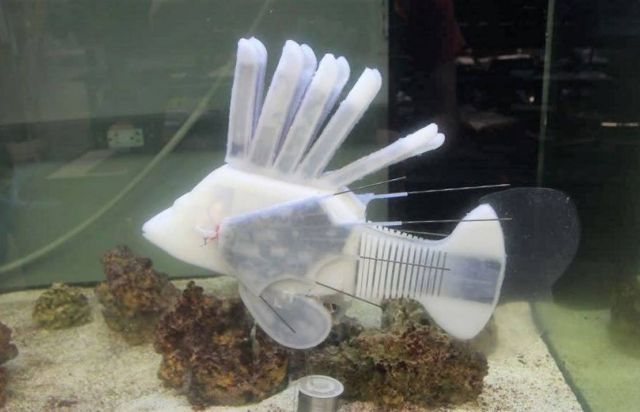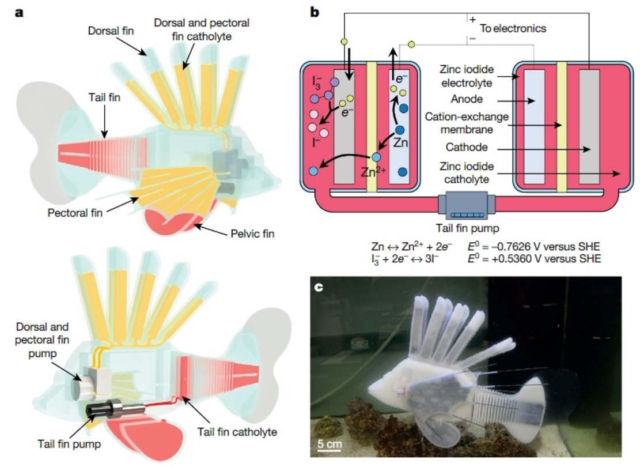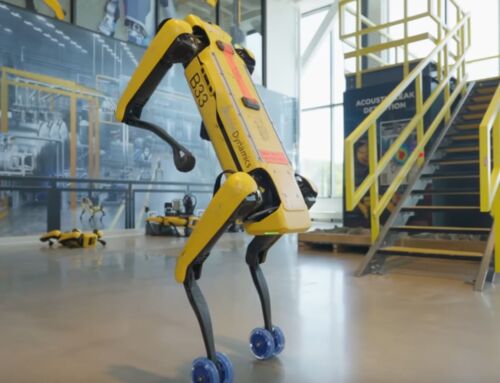Scientists created robotic fish that runs on ‘synthetic blood,’ acting as propulsion fluid and an energy store.
The electrolyte-infused ‘blood’ powers the fish eight times longer than the battery one, also propel it through the water.
Above, the soft robotic lionfish. The dark areas show the synthetic circulatory system. Credit James Pikul
Researchers hope to use the newly created method in more machines, like planes or cars.
Here we present a synthetic energy-dense circulatory system embedded in an untethered, aquatic soft robot. Modelled after redox flow batteries, this synthetic vascular system combines the functions of hydraulic force transmission, actuation and energy storage into a single integrated design that geometrically increases the energy density of the robot to enable operation for long durations (up to 36 hours). The fabrication techniques and flexible materials used in its construction enable the vascular system to be created with complex form factors that continuously deform with the robot’s movement. This use of electrochemical energy storage in hydraulic fluids could facilitate increased energy density, autonomy, efficiency and multifunctionality in future robot designs.
A lionfish-inspired robot powered by a multifunctional zinc iodide RFB. a, Renderings of the robot with the liquid catholyte in the tail fin (red) and the dorsal and pectoral fins (yellow) highlighted.
b, Schematic of the zinc iodide RFB. c, The assembled robot swimming underwater via tail fin actuation. SHE, standard hydrogen electrode.
via gizmodo







Leave A Comment